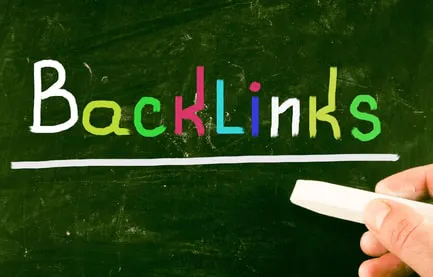You can’t learn about search engine optimization (SEO) without learning about backlinks. These handy links tell people that your site is important, therefore making your website more valuable to search engines. This guide will describe the best ways to get authentic backlinks to your site to boost its authority.
What are Backlinks?

A backlink is a link to your site from another site. You’re creating backlinks for other websites when you link to relevant content in your blog posts. Backlinks form connections between sites that let readers know where they can go for more information about what they’re reading on your blog.
Why are Backlinks Important for My Site?

When you get backlinks – also known as inbound links – to your site, you get genuine clout for that linked page. The linker is saying to their audience, “Hey, this content can help you, too. Go check it out!” It means that your content has something that the linker believes will be useful for its audience. This not only can give you a boost in search engine rankings, but it can also drive organic traffic to your page.
When an authority website gives you a backlink, it can do wonders for your site’s reputation. Think of authority sites in your niche as the ones that consistently rank within the top 10 for keyword searches that people may also use to find your website. The more quality backlinks from these trusted sources that you earn, the more Google will recognize your site as noteworthy for searchers.
No-follow vs. Do-follow Backlinks
No-follow and do-follow links are the two primary types of backlinks you could receive. The ones you’re shooting for are do-follow, as these are the ones that will tell search engines to notice to your page.
A no-follow link is one in which the linker tells search engines not to pay attention to that link. Brands or sites usually use the no-follow designation when they buy links for promotional purposes. Adding a no-follow tag to a link allows the company to buy the link without getting dinged for doing so by Google.
A do-follow link is what most sites will use for organic links they use to say “Kudos!” to other content pieces. When a blogger finds your content genuinely helpful, they’ll probably use a do-follow link to assist your Google ranking.
6 Ways to Get Backlinks Authentically

Although there are several ways to get backlinks, not all the methods will give you the genuine, organic backlinks you’re looking for. Here are a few ways to ensure you get quality backlinks that can drive you up the search rankings.
Utilize Your Social Media Profiles
Your social media profiles have more power than you know! Add a link to your website or new blog post in your profiles on Instagram, Twitter, and other social media channels. These platforms have excellent authority on the web, so getting their link juice can benefit your site.
Write Thorough, Helpful Guides
Think of topics your readers want to learn about. Then, right the most incredible, organized, and engaging guides on those topics. (Read about writing blog content that ranks for more help in creating the best blog content.)
The key here is to outperform other engaging guides for that topic that are already on the web. Check what’s ranking well first, and then figure out how you can make your guides bigger and better than any other content that currently exists. People can’t help but want to link to it once you do so.
Connect with Authority Figures in Your Niche
Make meaningful connections with thought-leaders in your niche. Find them in Facebook groups. Connect with them on social media platforms. Search for them on LinkedIn and request a connection. Then, chat with them. They have the power to link to your content when they learn more about you and what you do.
You won’t want to pitch them as soon as you connect, though. Instead, work on building a genuine relationship. Link to their content and let them know how helpful it was. You might find that they do the same for you, too.
Pitch Your Helpful Resources
You can pitch other site owners to let them know about the content you have that you think might be valuable to them. For example, a piece that lists dozens of SEO tips and best practices is something a content marketer might love to include in a guide about SEO for beginners.
Kindly ask if they’d be interested in linking to a blog post or an infographic that’s related to one of their content pieces. Give plenty of information about your content and why you think it’s a good fit for that site.
Write Guest Posts
Guest posting is the perfect strategy for link-building. Not only does it get your name out there on the web, but it also gives you links to your site on a variety of authority websites. Most blogs that accept guest posts let you link to your site in your author bio, and they may even allow you to place a link or two to your site’s content in the post itself.
Don’t forget to link to your guest post from your site to give the other site some backlink help, too.
Create Assets People Want to Link To
The face of content is evolving, making videos, visual graphics, quizzes, and other interactive content more popular than ever. People love to see things that keep them engaged, which is why these content pieces do so well.
Make a few of your own to place on your site. Then, pitch other sites to see if they’re interested in linking to them. Your asset should be something that immediately draws people in and can easily convince a website owner to link to it.
Build Backlinks to Boost Your Content
Don’t forget the importance of including social media share buttons on your website! Share buttons trigger people to share your content without you lifting a finger, which gets your content to more people, boosting engagement and SEO. By increasing the visibility of your content, you could earn more organic backlinks, too.




